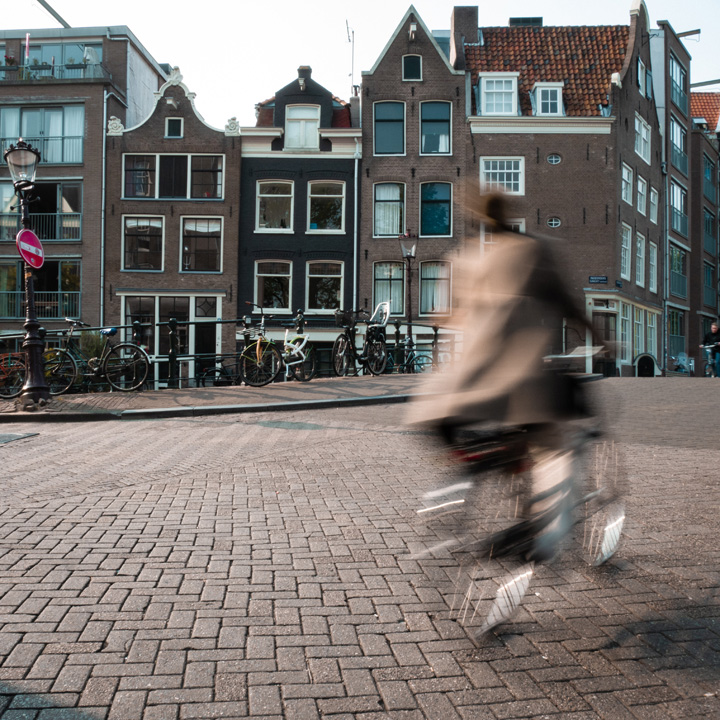Max Thinius
The return of local craft in the digital age
The return of local craft in the digital age

»There is an increasing sense that the industrial structure is no longer necessary.«

Everybody is aware of the fact that we are leaving the industrial age and moving straight into the digital age. But does this also mean that we will leave behind the logics and systems of industrial production, just as we left behind rural life more than a hundred years ago?
More than 80% of the everyday life changed back then. It began with the advent of steam engines and people began to move from rural areas into closer proximity to factories while cities were massively developed. Industrial centres emerged and roads were built to bring resources and people to the factories as quickly as possible. New laws were also needed, because people in the early industrial age initially worked as they did on a farm: 16 hours a day, six days a week. But that didn’t work in industrial surroundings.
»Integrated city districts are re-emerging, …
similar to pre-industrial times.«
The entire life and production cycle changed and was made more efficient thanks to the new technology. More than hundred years ago the industrial age benefitted also from the fluctuating quality of traditional craftsmanship and offered goods at prices and in quantities that were previously unthinkable.
While only very few artisan enterprises were able to compete with this development, the industrialisation became both a symbol of quality and a driver of the economy – and changed everything within a very short period of time.
Today it’s digitalisation and there is an increasing sense that the industrial structure is no longer necessary. The introduction of the home office has made this very apparent. Most professions no longer require the presence of workers in an office, and this is already changing our cities.
The classic three-way split of living, working and shopping is dissolving. Integrated city districts are re-emerging, similar to pre-industrial times, where all these three activities occur side by side. The term ‚15-Minute-City‘ has already been coined: It’s a place where everything a resident needs can be reached within a quarter of an hour by foot or bike.

What we also notice is that small and medium-sized cities are growing particularly fast. The metropolis is no longer necessary for everyday life; the quality of life in small and medium-sized cities is often far better. By 2025, at the latest, we expect more people in Europe to move to small and medium-sized towns and villages than to large cities.
Within these changing urban structures, craftsmanship will also return. Quite simply because it is the logical consequence of digitalization. You can see this well in the example of the carpenter. A CAD-controlled milling and sawing machine cost a quarter of a million euros just a few years ago.
Today, with higher speed and precision, the same machine costs only round about €25,000. It’s similar in a lot of other craftsmanship segments – you can do more and better for less invest plus suddenly there is the chance to re-locate production where one wants. For example, in a city like Copenhagen, where the whole production chain of my favourite T-Shirts and Polo-Shirts is located with a state of the art made to measure technique.

But the changes can not only be identified in production chains but are also triggered by software developments. Anyone who brews beer today will no longer buy a brewing system for several hundred thousand euros, but a kettle for €250.
This already contains five sensors, computer software and around 3.4 million open-source recipes. I can process these directly into perfect beer without much trial and error with a taste much better than beer from industrial production. The software tells me exactly what to do to create my desired beer.

The industrial mode of production is being dissolved and craftsmanship, with digital support, is coming back. It will prevail because it can react and adapt much more flexibly to fluctuations in the market. And the best thing is: it’s not a future process – it has already begun.
Imagine your neighbourhood full of digitally enhanced craft businesses. Workshops where you can stop by easily and discuss the order for your personalized item directly with the master artisan or the craftspeople. There would be no need to produce nearly everything abroad on the other side of our planet.
Digitalisation will trigger the comeback of a new breed of craftsmanship. Locally based just around your corner, relying on regional resources with incredibly cool opportunities. The future will be as good as we allow it to be – I’m counting on you!






Join our Community